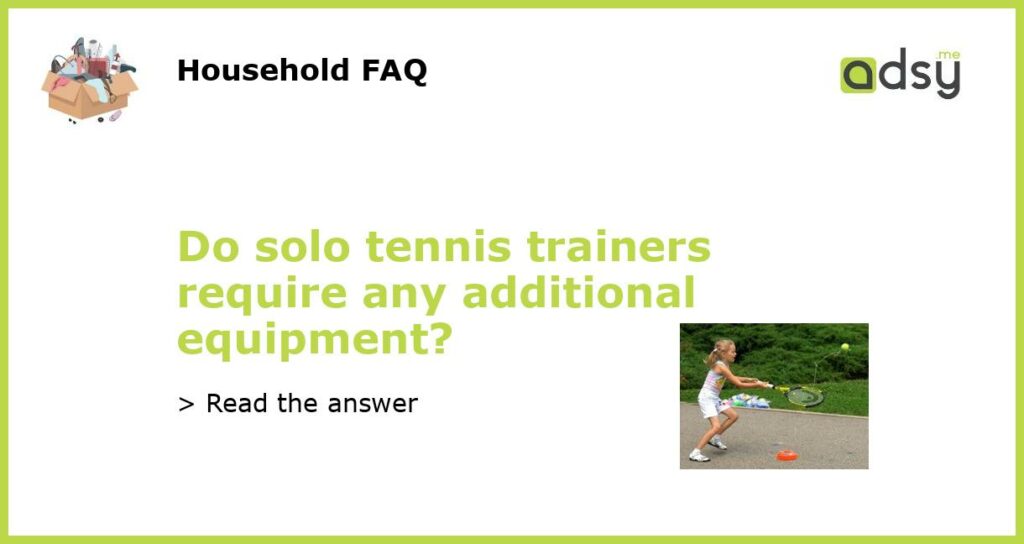Yes, solo tennis trainers can benefit from additional equipment
Tennis is a sport that requires skill, focus, and dedication. Whether you are a professional player or a casual enthusiast, solo tennis training can help improve your game. While a tennis court and a racket are generally the main tools needed for solo training, there are several additional pieces of equipment that can enhance your practice sessions. These accessories can assist with technique, coordination, and fitness, helping you become a better player on the court. In this article, we will explore some of the equipment that solo tennis trainers could consider adding to their training routine.
Tennis Ball Machine
A tennis ball machine is a valuable tool for solo trainers. This machine can simulate a real opponent by shooting balls at varying speeds and angles. By using a tennis ball machine, solo trainers can work on their footwork, stroke technique, and reaction time. The consistent delivery of balls allows players to focus on specific aspects of their game, without the need for a partner. These machines are available in different price ranges and can be set to various modes and difficulty levels, making them suitable for players of all skill levels.
Practice Wall
A practice wall is another piece of equipment that solo tennis trainers can benefit from. These walls are typically made of concrete or wood and have markings to indicate the height and direction of the ball. Hitting against a practice wall allows players to practice their strokes, volleys, and groundstrokes without the need for a partner. It helps improve ball control, precision, and timing. Practice walls are readily available in many tennis courts or can be constructed at home with the proper materials.
Resistance Bands
Resistance bands are versatile tools that can assist with strength and flexibility training. Solo trainers can use resistance bands to add resistance to their exercises, improving the power in their strokes and the stability in their movements. These bands can be easily incorporated into a solo training routine, providing an effective way to target specific muscle groups used in tennis. Exercises using resistance bands can help improve speed, agility, and overall fitness on the court.
Tennis Training Aids
There are a variety of tennis training aids available in the market that can help solo trainers improve their technique and form. These aids include devices that attach to the racket to improve swing mechanics, tools that assist in developing a consistent serve motion, and devices that provide feedback on contact and follow-through. By utilizing these aids, solo trainers can fine-tune their skills and develop muscle memory for proper technique. It is important to note that while training aids can be beneficial, they should not replace proper coaching and guidance.
Video Recording Equipment
Recording yourself during solo training sessions can be an effective way to analyze and improve your technique. By using video recording equipment, such as a smartphone or a camera, you can review your strokes, footwork, and overall movement on the court. This allows you to identify areas for improvement and make adjustments to your technique. Video analysis can provide valuable insights that may not be apparent in real-time practice. It is a useful tool for solo trainers who are looking to refine their skills and make progress in their tennis journey.






